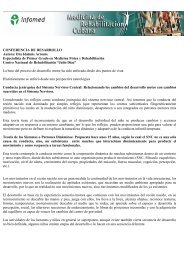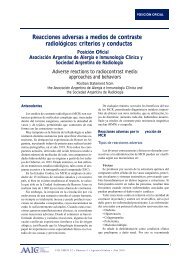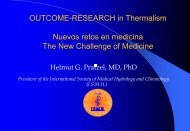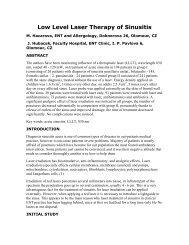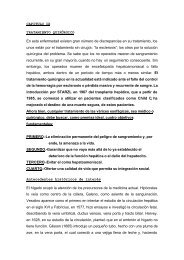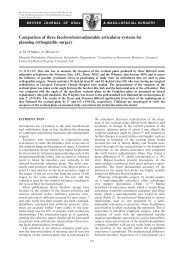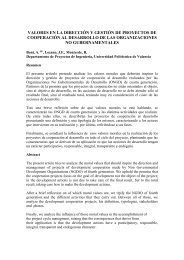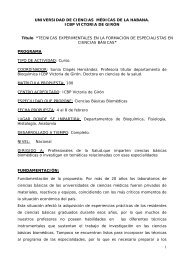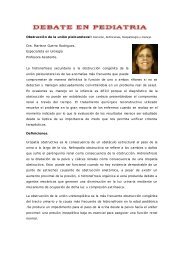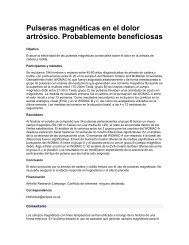Perioperative Anaphylaxis
Perioperative Anaphylaxis
Perioperative Anaphylaxis
Create successful ePaper yourself
Turn your PDF publications into a flip-book with our unique Google optimized e-Paper software.
<strong>Perioperative</strong> <strong>Anaphylaxis</strong> 435<br />
reactions. 49 Evidence for IgE-mediated adverse reactions to gelatin have also been<br />
reported. 48 In addition, adverse reactions to urea-linked gelatin (0.852%) seem to<br />
be more frequent than with modified fluid gelatin (0.338%), 48 whereas IgG-mediated<br />
adverse reactions to hydroxyethyl starch are less frequent. The rate of adverse<br />
reactions has been estimated to be 0.275% for dextrans, 0.099% for albumin, and<br />
0.058% for hydroxyethyl starch solutions. 48<br />
DYE<br />
Vital dyes have been used for many years in a variety of clinical situations and have long<br />
been considered a rare cause of anaphylaxis. This association may be due, in part, to<br />
misleading nomenclature. 50 Patent blue V (also called E131, acid blue 3, disulfine<br />
blue) and isosulfan blue (also called patent blue violet or lymphazurine), which belong<br />
to the group of triarylmethan dyes and share the same formula, are the most commonly<br />
used. A recent literature review that included various names of these dyes revealed an<br />
impressive number of case reports of hypersensitivity reactions, 51 and it has been suggested<br />
that sensitization occurs using everyday products containing blue dyes. In view<br />
of the increasing use of blue dyes for lymphatic mapping for sentinel lymph node biopsy,<br />
the incidence of anaphylaxis to these drugs can be expected to increase. The mechanism<br />
underlying the allergic reaction to patent blue remains unclear. Both direct mast<br />
cell and basophil activation and cross-linking of specific IgE antibodies are possible<br />
causative factors. Evidence supporting an IgE-mediated mechanism, at least in<br />
some patients, comes from two clinical reports, one demonstrating an immune-mediated<br />
mechanism by a passive transfer test 52 and the second demonstrating the presence<br />
of specific IgE detected by an ELISA test. 53<br />
Methylene blue has also been shown to be an effective dye for sentinel lymph<br />
node localization, with only a limited number of complications reported. Anaphylactic<br />
reactions involving methylene blue seem to be rare, perhaps because this<br />
small molecule does not bind to plasma proteins, reducing the risk of sensitization<br />
via a hapten-protein complex. This dye differs structurally from isosulfan blue and<br />
patent blue V; therefore, cross-reactivity is not expected. Nevertheless, several<br />
reports of sensitization to both patent blue and methylene blue have been<br />
reported. 54,55 These reports support the systematic investigation of a possible<br />
cross-reactivity before the use of an alternate dye. A negative skin test with methylene<br />
blue in the case of a hypersensitivity reaction to patent blue V or isosulfan blue<br />
might be an argument in favor of using methylene blue for future sentinel lymph<br />
node mapping.<br />
The clinical diagnosis of reactions elicited by dyes is difficult. Reactions are usually<br />
relatively delayed (ie, 30 minutes following injection), long lasting, and justify a prolonged<br />
survey in an intensive care unit when prolonged epinephrine administration<br />
is necessary. 54<br />
APROTININ<br />
Aprotinin is a naturally occurring serine protease inhibitor that has found widespread<br />
application either by the intravenous route or as a component of biologic sealants<br />
because of its ability to decrease blood loss and, as a consequence, transfusion<br />
requirements. Anaphylactic reactions are mediated by IgG and IgE antibodies. The<br />
risk of anaphylactic reactions has been estimated to range from 0.5% to 5.8%<br />
when used intravenously during cardiac surgery; 5 in 100,000 applications are<br />
affected when it is used as a biologic sealant. 56,57 Patients previously treated with<br />
this drug present an increased risk, and any new administration should be avoided



